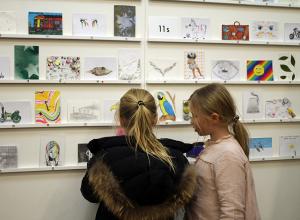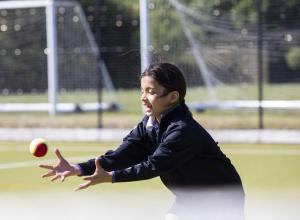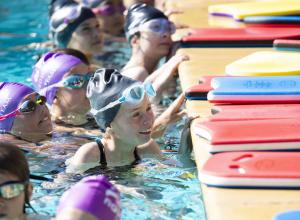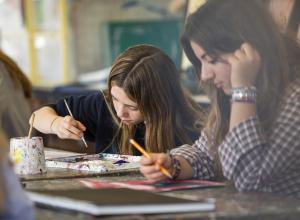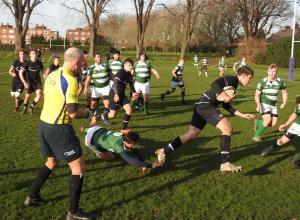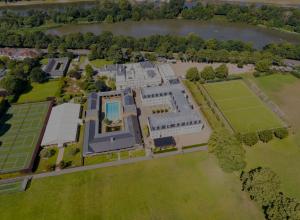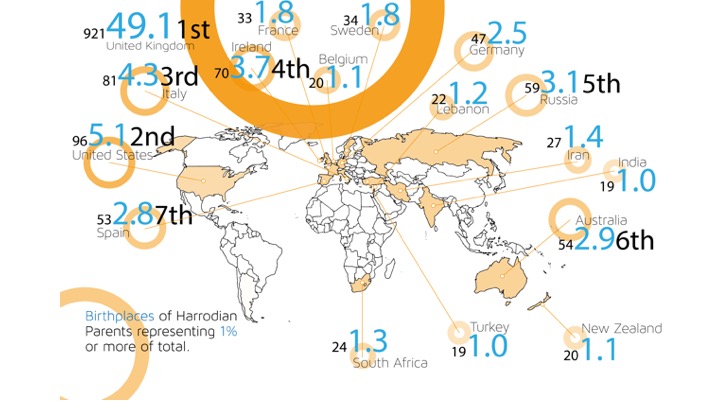
A new survey and 'infographic' presentation reveals that Harrodian pupils have roots in no fewer than 90 different countries. Mr Hooke reflects on how Harrodian became a United Nations amongst schools.
Is there a school in this city with a more cosmopolitan population than Harrodian’s? London is one of the world’s most linguistically and ethnically diverse places – at the last official count, 37 per cent of the capital’s population were foreign – but I’d be surprised if any primary or secondary institution can match this school for the sheer variety of its world connections. Ninety different nations – from Italy to Indonesia, Brazil to Belarus, Chile to Kenya – are represented among our current pupil body, and children of parents born in countries beyond the UK make up just over half our total pupil roll.
Ninety different nations – from Italy to Indonesia, Brazil to Belarus, Chile to Kenya – are represented among our current pupil body
I have these facts and figures at my fingertips thanks to ‘Where we come from’, a brilliantly researched and presented study of the family roots and backgrounds of all Harrodians recently put together by our Head of Design and Photography, Mr Jake Murray. ‘I kept on meeting more Harrodian pupils with Italian names and, as a lover of all things Italian, it intrigued me to find out how many there were,’ Mr Murray told me in explanation of his mission. ‘Investigating that set me on the path to the bigger question of finding out where we all came from.’
As the 'infographic' above shows, the answer to the first question is 81 – Italians make up the third largest national group among Harrodian pupils – and there are plenty more fascinating nuggets in the beautiful and informative presentation which Mr Murray produced and which accompanies this blog. I have pulled out a few of them below.
Children of parents born in countries beyond the UK make up just over half our total pupil roll.
- Including a total of 90 countries, Harrodian represents not far short of half the world’s number of nations (193).
- Overseas born parents slightly outnumber UK natives (49.1% of parents were born in UK, 50.9% overseas).
- The top five countries represented at Harrodian apart from the UK are:
- US 96 pupils 5.1%
- Italy 81 pupils 4.3%
- Ireland 70 pupils 3.7%
- Russia 59 pupils 3.1%
- Australia 54 pupils 2.9%
- All but five of the 44 European countries are represented at Harrodian: to complete the set, we need to find a new pupil from each of Slovakia, Slovenia, Latvia, Moldova and Bosnia.
- The pattern of national variety our parent body demonstrates is mirrored by that of our teachers (bottom).
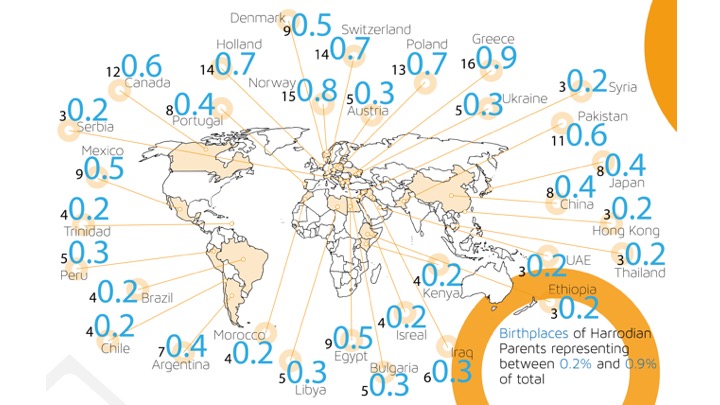
So how and why has Harrodian acquired its distinctly multinational character, you might ask? As the Headmaster who set the process in motion, I admit that the original impulse was more spontaneous than strategic. In my early days at the helm, I was surprised by – and deeply sympathetic to – the many prospective overseas parents I met who were struggling to find a school in the UK willing to consider their children for entry. Many schools, it seemed, were wary of overseas applicants in case issues such as limited working English or Science knowledge (thanks to differences in national curricula) should make their integration too slow and labour-intensive.
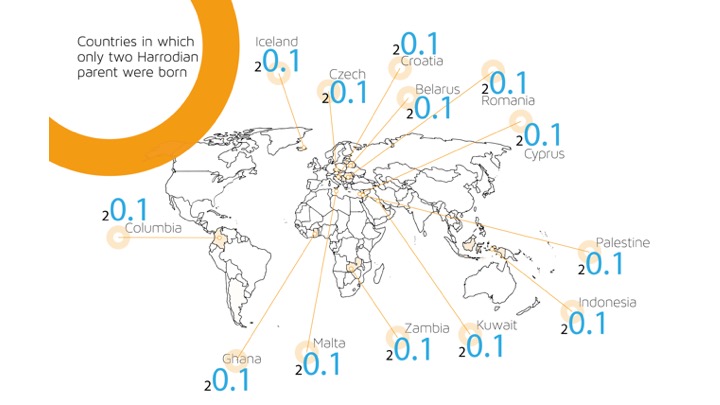
This seemed to me a short-sighted view. Throughout my tenure, Harrodian has always championed an open-minded and hospitable approach to overseas entry policy. Harrodian is not an ‘international school’. Wherever would-be parents may come from, our expectation is that they should be wiling to commit their children to Harrodian for the long term. But when it comes to selection, we firmly believe that a candidate’s personality and long-term promise always trumps any initial assimilation or other teething problems.
It gives me huge pleasure and pride to reflect on how many children from overseas have used the place we gave them at Harrodian as the platform for high achievement
I have never had cause to regret this willingness to ‘play the long game’. Twenty years on, it gives me huge pleasure and pride to reflect on how many children from overseas have used the place we gave them at Harrodian as the platform for high achievement at GCSE and A level and progress to top universities in Britain and beyond. Just as important, our overseas pupils have helped define Harrodian’s singular scholastic character and spirit. Unmistakably English in setting and architecture and offering British curricula and qualifications, Harrodian nevertheless accommodates a diverse range of national cultures within a student and parent community which, for all its variety, is extraordinarily friendly and close-knit.
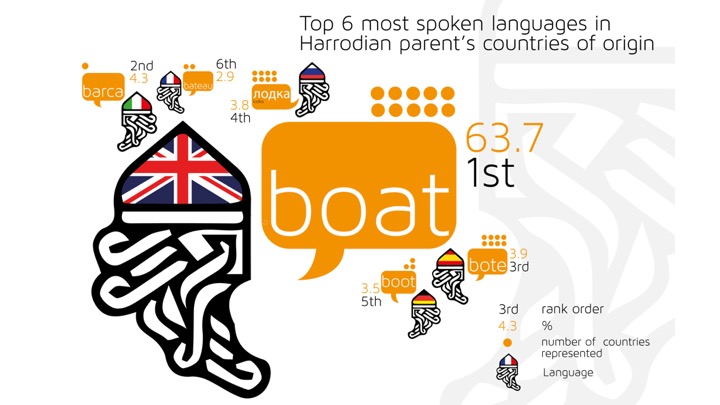
The final word on ‘Where we come from’ should belong to the Harrodian students with overseas connections that I asked to contribute to this episode of the blog. Born and raised in London of Italian parents and a Harrodian since the 11s, Cecilia is an Upper Sixth Former who cherishes her national heritage. ‘I’m still immersed in the culture and I want to be able to work in Italy,’ she told me when I asked her what she valued about the school. ‘I think Harrodian has given me a British education alongside the freedom to hold onto my cultural roots and my own language.’
Thanks to the range of nationalities, there are always different voices contributing new views to the conversation. It’s a rich culture that offers the best of all worlds
Kristjan, Harrodian Sixth Former
Icelandic-born Lower Sixth Form student Kristjan, who chose Harrodian in preference to an all-male London prep and public school at the age of eight, also appreciates the opportunity he has had to interact with other sexes and national cultures. ‘My national pride is still definitely for Iceland but I like the Englishness of the place. The sport, the architecture and the setting are all very ‘proper’ but the traditional packaging conceals a very progressive culture,’ he says. ‘Thanks to the range of nationalities alongside British students, there are always different voices contributing new views to the conversation. It’s a rich culture that offers the best of all worlds.’


